اینلیست کارهای محصولیک لیست مرتب از همه چیزهایی است که در مورد محصول شناخته شده و مورد نیاز است. این یک منبع واحد برای هرگونه تغییر در محصول است.
مالک محصول مسئول لیست کارهای محصول است، از جمله محتوا، در دسترس بودن و ترتیب آن.
لیست کارهای محصول هرگز کامل نخواهد شد. تغییرات در نیازهای کسب و کار، شرایط بازار یا فناوری ممکن است منجر به تغییرات در لیست کارهای محصول شود. این لیست با توسعه محصولات و تغییرات محیط پروژه تکامل مییابد. نیازهای پروژه هرگز متوقف نمیشوند، بنابراین لیست کارهای محصول مانند یک اثر اسکرام در حال تکامل است.
موارد با اولویت بالا در لیست کارهای محصول دقیقتر هستند. زیرا این پروژهها اطلاعات و جزئیات بیشتری دارند و بنابراین برآوردهای دقیقتری دارند.
پروژههای با اولویت پایین پروژههای بزرگتری هستند که جزئیات کمتری دارند. با دریافت اطلاعات دقیقتر در مورد پروژههای با اولویت پایین، این پروژهها به پروژههای کوچکتر تقسیم خواهند شد. تیم توسعه مسئول ارزیابی این موارد در لیست کارهای محصول از زمان به زمان است.
DEEP در مدیریت لیست کارهای محصول
لیست کارهای محصول شامل تمام ویژگیها، عملکردها، نیازها، بهبودها و اصلاحات مورد نیاز برای انتشار محصولات است. پروژههای لیست کارهای محصول دارای ویژگیهای توصیف (به طور مناسبDقیق)، امتیازهای داستان (Eستیمات)، و ترتیب (Pریالیزه شده). آنها باید به طور مداوم اضافه، حذف و بهروزرسانی شوند (Eاجتنابناپذیر) در لیست کارها، و درک تیم از لیست کارها را به موقع و به طور مناسب منعکس کند.
رومن پیچلر نویسنده مدیریت محصول چابک با اسکرام است که ذکر شده است:
«ایجاد محصولاتی که مشتریان دوست دارند. ما از اختصار چهار حرفی DEEP برای توصیف ویژگیهای یک لیست کار خوب استفاده میکنیم.» این یک اختصار توصیفی برای کیفیت لیست کار محصول در اسکرام است که به معنای:Dقیق به طور مناسب،Eاجتنابناپذیر،Eستیمات وPریالیزه شده.
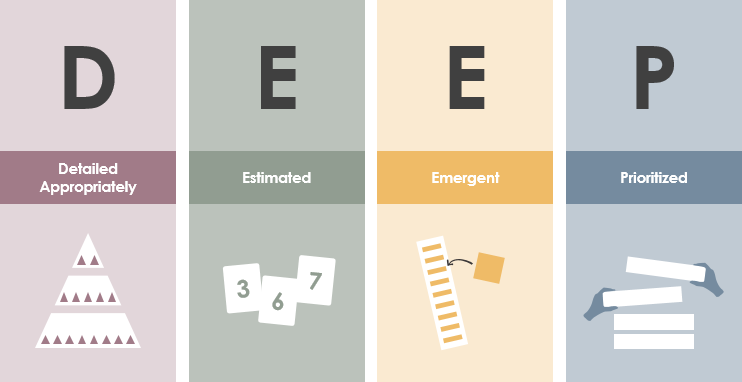
جزئیات به طور مناسب
داستانهای نزدیک به بالای لیست کارهای محصول در اسپرینت بعدی کار خواهند کرداسپرینتبنابراین این موارد باید به اندازه کافی تعریف شده باشند تا تیم بتواند به طور مؤثرتری بر روی آنها کار کند. معمولاً، داستانهای نزدیک به بالای لیست کارها کوچکتر و دقیقتر هستند، اما به تدریج بزرگتر و کمتر خاص میشوند، همانطور که در شکل زیر نشان داده شده است:
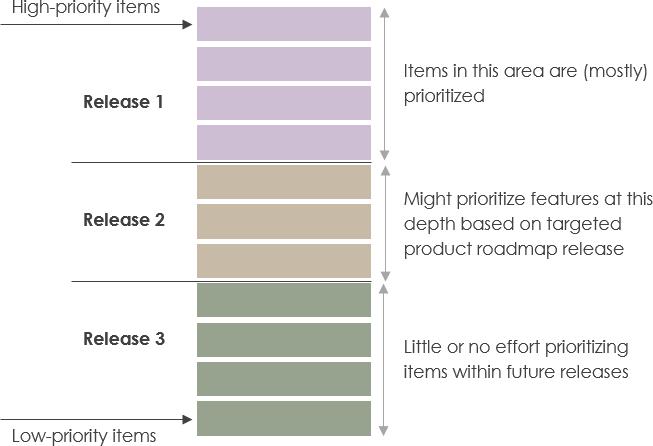
برآورد شده
موارد در لیست کارهای محصول برآورد شدهاند. موارد در بالای لیست کارها برآوردهای دقیقتری دارند. موارد با اولویت پایین در سطح بالا برآورد میشوند و میتوانند با دریافت اطلاعات بیشتر دوباره برآورد شوند.
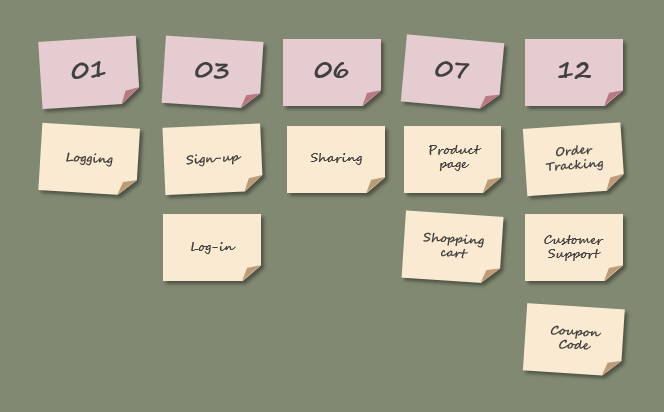
اجتنابناپذیر
لیست کارهای محصول ایستا نیست، بلکه در حال تغییر مداوم است. با پیشرفت پروژه، اطلاعات و دانش بیشتری به دست میآید و داستانهای کاربری در لیست کارهای محصول نیز اضافه، حذف یا دوباره ترتیب داده میشوند.
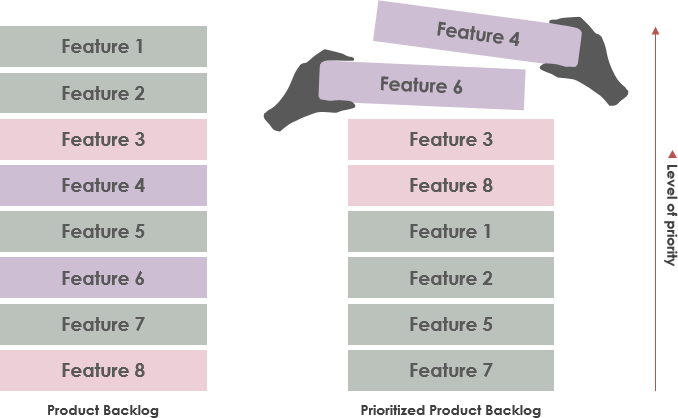
اولویتبندی شده
در لیست کارهای محصول، هر چه ورودی با اولویت بالاتر ارزش بیشتری داشته باشد، ارزش ورودیهای پایینتر در لیست کارهای محصول کمتر است و اولویت کمتری دارند. تیمها همیشه ورودیهای با اولویت بالا را کامل میکنند تا اطمینان حاصل کنند که ارزش محصول یا سیستمی که در حال توسعه است، به حداکثر میرسد.
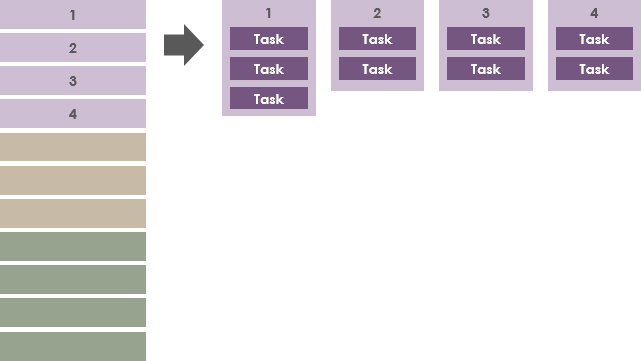
خلاصه
DEEP یک مفهوم مفید است که باید درفرآیند بهبود لیست کارهای محصولفرآیندی که شامل عمل افزودن جزئیات، برآوردها و ترتیب به موارد در لیست کارهای محصول و نگهداشتن آن در شکل مناسب است.
در طول بهبود لیست کارهای محصول، موارد بررسی و اصلاح میشوند. تیم اسکرام تصمیم میگیرد که چگونه و چه زمانی بهبود انجام شود. بهبود معمولاً بیش از 10٪ از ظرفیت تیم توسعه را مصرف نمیکند. با این حال، موارد لیست کارهای محصول میتوانند در هر زمان توسط مالک محصول یا به صلاحدید مالک محصول بهروزرسانی شوند.
منابع
- لیست کارهای محصول در اسکرام چیست؟ چه کسی مسئول آن است؟
- چگونه لیست کارهای محصول را بهبود دهیم؟
- لیست کارهای اسپرینت در اسکرام چیست؟
- چگونه لیست کارهای محصول را با استفاده از روش MoSCoW اولویتبندی کنیم؟
- چگونه لیست کارهای محصول را با استفاده از روشهای 100 امتیازی اولویتبندی کنیم؟
- هدف اسپرینت در اسکرام چیست؟
- نمودار سوختن در اسکرام چیست؟
- قالب نقش-ویژگی-دلیل چیست؟
- افزایش اسپرینت در مقابل محصول قابل ارسال بالقوه در مقابل MVP در مقابل MMP
- اهداف SMART بنویسید و برای داستانهای کاربری INVEST کنید
- تم در مقابل حماسه در مقابل داستان کاربری در مقابل وظیفه
- DEEP در لیست کارهای محصول چیست؟
This post is also available in Deutsch, English, Español, Français, Bahasa Indonesia, 日本語, Polski, Portuguese, Ру́сский, Việt Nam, 简体中文 and 繁體中文.













